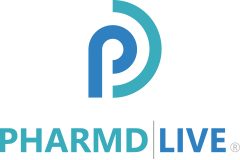
More Than Missed Doses: A Multi-Billion Dollar Threat
In 2025, one of the most preventable yet persistent threats to U.S. healthcare outcomes continues to be dangerously under-addressed: medication non-adherence.
According to the National Community Pharmacists Association (NCPA), patients who don’t follow prescriptions typically engage in at least three of nine risky behaviors, including skipping doses or taking someone else’s medication. These actions may seem minor in isolation, but they collectively drive a public health emergency.
The toll? Over $300 billion in avoidable healthcare costs and 125,000 preventable deaths annually, making medication non-adherence a top contributor to chronic condition progression, hospitalizations, and readmissions.
Why Non-Adherence Is a Business Risk, Not Just a Clinical One
For executives, payers, and healthcare leaders operating in a value-based care (VBC) environment, non-adherence is more than a clinical lapse; it’s a structural risk.
It inflates utilization, erodes HEDIS and STAR ratings, disrupts chronic care outcomes, and undermines VBC objectives. Despite the proliferation of therapies and EHRs, up to 50% of patients with chronic conditions still do not take their medications as prescribed.
The economic burden is especially sharp in Medicare Advantage populations, where polypharmacy and complex regimens increase medication-related risks. These unmanaged issues jeopardize STAR ratings, quality metrics, and risk-adjusted payment formulas.
What Does Medication Non-Adherence Look Like?
According to the National Community Pharmacists Association (NCPA) and other leading studies, non-adherence behaviors typically include:
- Failure to fill or refill a prescription
- Skipping doses or days
- Taking less or more than prescribed
- Stopping medications early
- Taking old or another person’s prescription
- Forgetting to take prescribed doses regularly
With sophisticated EHR systems and pharmacy integrations available, non-adherence in 2025 isn’t a mystery; it’s a missed opportunity.
Why Do Patients Still Struggle With Adherence?
Medication non-adherence is driven by multiple root causes, including:
- Cognitive decline and lack of support, especially in seniors
- Cost barriers and insurance complexities
- Adverse side effects, mistrust, or poor communication
- Complicated medication regimens in polypharmacy settings
The World Health Organization emphasizes that “improving adherence may have a greater impact on population health than any specific medical treatment.”
The Real Costs to U.S. Healthcare in 2025
- 125,000 preventable deaths/year
- Up to 69% of medication-related hospitalizations
- Lower performance on CMS Star Ratings, HEDIS metrics, and payer contracts
- Increased chronic care costs, ER visits, and readmissions
PharmD Live’s Medication Risk Management: A 2025 Solution to a Persistent Challenge
At PharmD Live, we recognize that overcoming medication non-adherence requires more than automation; it demands clinical innovation and pharmacist activation.
Our Medication Risk Management (MRM) program transforms medication management with a pharmacist-led, virtual-first model embedded directly into care workflows.
What Sets PharmD Live’s MRM Program Apart:
- Pharmacist-led, comprehensive medication reviews
- Personalized deprescribing and reconciliation protocols
- Identification of behavioral, clinical, and social determinants impacting adherence
- Adverse Drug Event (ADE) prevention and polypharmacy risk mitigation
- Post-discharge medication tracking and continuity of care
- Tailored telehealth engagement plans for high-risk populations
Our approach is data-driven, clinically intelligent, and digitally connected, allowing us to bridge care gaps, reduce regimen complexity, and deliver sustained improvements in adherence.
Results:
Our clients have reported up to a 35% increase in adherence rates within 90 days, along with fewer hospitalizations, improved CMS Star Ratings, and stronger performance-based reimbursement, particularly among Medicare Advantage and dual-eligible patients.
🔗 Explore our Medication Adherence Program Here
Why Pharmacists Are the Secret Weapon in 2025
Pharmacists are no longer just dispensers or peripherals. In 2025, they are strategic players in value-based care.
- Up to 40% increase in adherence with pharmacist-led interventions
- $1,200 in average annual savings per patient with pharmacist engagement
- Fewer readmissions, better ROI, stronger care continuity
What Healthcare Leaders Can Do Next
To move the needle on adherence, leaders should:
- Implement pharmacist-led MRM into clinical workflows
- Use predictive data to flag and support high-risk patients
- Offer cost-transparency and access pathways
- Align incentives around outcomes and medication adherence
- Empower patients through education and simplified regimens
2025 Is the Turning Point for Medication Adherence
If poor adherence were a disease, it would rank among the deadliest and most expensive in the U.S., but unlike many conditions, this crisis is solvable.
Medication adherence has become a true metric of success in a healthcare system driven by value. We can turn avoidable risks into measurable gains with the right tools, teams, and technology.
PharmD Live empowers practices, payers, and providers to lead that change.
Let 2025 be the year your organization redefines care through medication adherence.
🔗 Ready to activate change? Partner with PharmD Live today.
📚 References:
- National Community Pharmacists Association. (2013). Medication adherence in America: A national report card. https://www.ncpa.co/adherence/AdherenceReportCard_Full.pdf
- Neiman, A. B., Ruppar, T., Ho, M., Garber, L., Weidle, P. J., Hong, Y., George, M. G., & Thorpe, P. G. (2017, November 17). CDC Grand Rounds: Improving medication adherence for chronic disease management—innovations and opportunities. Morbidity and Mortality Weekly Report, 66(45), 1248–1251. http://dx.doi.org/10.15585/mmwr.mm6645a2
- Benjamin, R. M. (2012). Medication adherence: Helping patients take their medicines as directed. Public Health Reports, 127(1), 2–3. https://doi.org/10.1177/003335491212700102 (PMC No. 3234383). Retrieved from https://www.ncbi.nlm.nih.gov/pmc/articles/PMC3234383/
- Ding, A., Dixon, S. W., Ferries, E. A., & Shrank, W. H. (2022). The role of integrated medical and prescription drug plans in addressing racial and ethnic disparities in medication adherence. Journal of Managed Care & Specialty Pharmacy, 28(3), 379–386. https://doi.org/10.18553/jmcp.2022.28.3.379
- Brown, M. T., & Bussell, J. K. (2011). Medication adherence: WHO cares? Mayo Clinic Proceedings, 86(4), 304–314. https://doi.org/10.4065/mcp.2010.0575
- Centers for Medicare & Medicaid Services. (2017). Medication therapy management program guidance and best practices for Medicare prescription drug plans and Medicare Advantage prescription drug plans. https://www.cms.gov/Medicare/Prescription-Drug-Coverage/PrescriptionDrugCovContra/MTM
- National Community Pharmacists Association. (n.d.). Medication adherence in America: A national report card. Retrieved June 11, 2025, from https://ncpa.org/medication-adherence-in-america-a-national-report-card
- World Health Organization. (2003). Adherence to long-term therapies: Evidence for action. https://apps.who.int/iris/handle/10665/42682
- Budnitz, D. S., Lovegrove, M. C., Shehab, N., & Richards, C. L. (2011). Emergency hospitalizations for adverse drug events in older Americans. New England Journal of Medicine, 365(21), 2002–2012. https://doi.org/10.1056/NEJMsa1103053
- Centers for Medicare & Medicaid Services. (2023). Medicare star ratings technical notes. https://www.cms.gov/Medicare/Prescription-Drug-Coverage/PrescriptionDrugCovGenIn/Downloads/2023-Medicare-Star-Ratings-Technical-Notes.pdf
- OECD. (2019). Health at a glance 2019: OECD indicators. OECD Publishing. https://doi.org/10.1787/4dd50c09-en
- Choudhry, N. K., Fischer, M. A., Avorn, J., Liberman, J. N., Schneeweiss, S., Pakes, J., … & Shrank, W. H. (2011). The implications of therapeutic complexity on adherence to cardiovascular medications. The American Journal of Managed Care, 17(11), 778–785. https://www.ajmc.com/view/the-implications-of-therapeutic-complexity-on-adherence-to-cardiovascular-medications
- PharmD Live. (2025, January 29). Hospital readmissions: Reducing costs with innovative solutions. https://www.pharmdlive.com/blog/hospital-readmissions-impact-on-cost/
- PharmD Live. (2025, February 18). PharmD Live releases white paper on pharmacist-led virtual care to maximize shared savings for payviders. https://www.pharmdlive.com/blog/pharmd-live-releases-white-paper-on-pharmacist-led-virtual-care-to-maximize-shared-savings-for-payviders/








